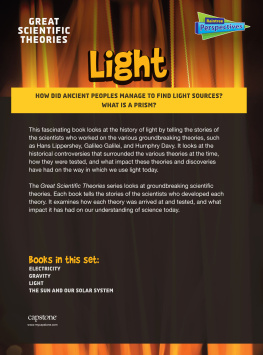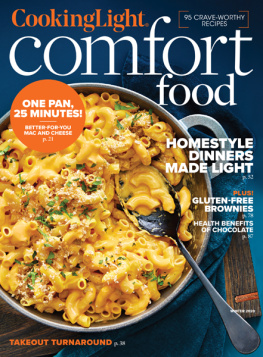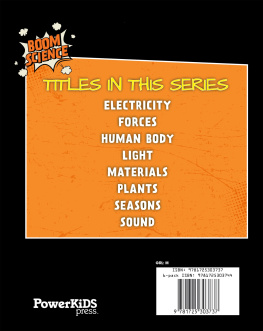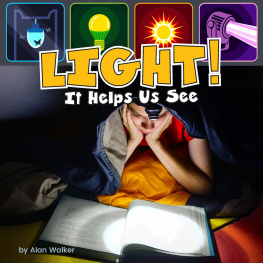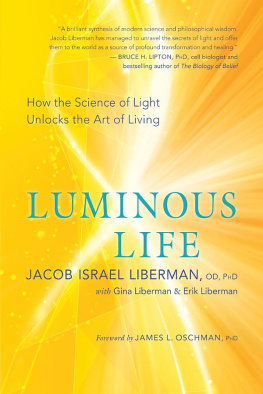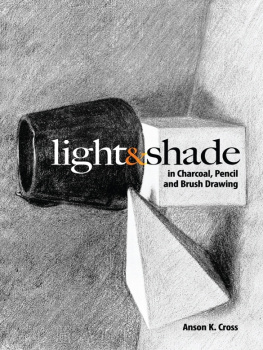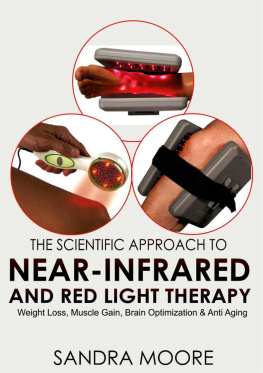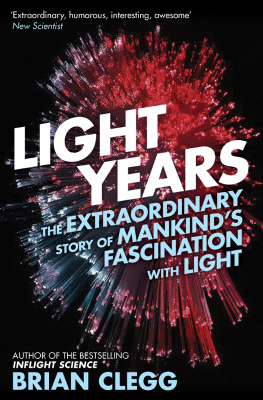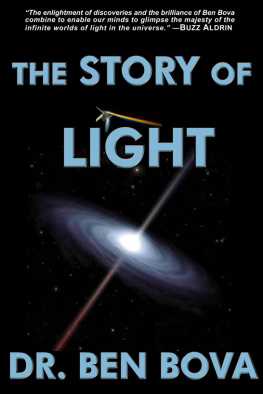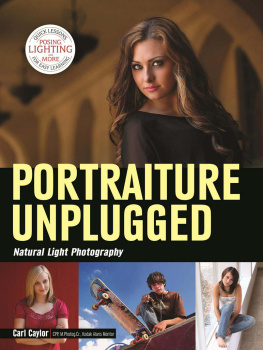Thank you for downloading this Simon & Schuster ebook.
Get a FREE ebook when you join our mailing list. Plus, get updates on new releases, deals, recommended reads, and more from Simon & Schuster. Click below to sign up and see terms and conditions.
CLICK HERE TO SIGN UP
Already a subscriber? Provide your email again so we can register this ebook and send you more of what you like to read. You will continue to receive exclusive offers in your inbox.
We hope you enjoyed reading this Simon & Schuster ebook.
Get a FREE ebook when you join our mailing list. Plus, get updates on new releases, deals, recommended reads, and more from Simon & Schuster. Click below to sign up and see terms and conditions.
CLICK HERE TO SIGN UP
Already a subscriber? Provide your email again so we can register this ebook and send you more of what you like to read. You will continue to receive exclusive offers in your inbox.

MY PERSONAL LIGHT JOURNEY
M y fascination with light started when I was a young boy growing up in Sweden. Dad was a cubist painter and worked on large canvases, to which he applied shiny layers of smelly oil paint. His atelier had large windows, facing north, toward the sky, and they gave the whole room a quality of transparency; he was always stressing the necessity of good daylight to get the subtle gradations of color right. I loved to spend time in that spacious studio, and somehow became fascinated with the shimmering interaction of light and color. Eventually I made crude attempts at painting, and a whole new world opened up before my eyes.
As I looked into the interplay of light and color, I wanted to find out more about the nature of this visual magic. This journey led me to study architecture as a young man. But if I thought my studies would help me to understand and indeed to learn more about the wonders of natural light, I was mistaken. It was the 1960s, after all, and the architectural approach to light was blunt and practical, and focused on artificial light; electric lamps were technical commodities to be switched on and off without any further thought. The outflow of light was promptly measured in watts and lux, the building blocks of electric light, and even though we humans were the end users of these technical wonders, there was very little mention of how they might affect us, emotionally or biologically. It was simply something that architects, and indeed consumers, didnt think about at that time.
Those of us old enough to remember will understand that those were the days of frantic modernism, of looking forward to a bold future, a brave new world in which machines would swiftly solve most of our problems. Nature was shamelessly tamed or maimed, and fluctuating daylight was considered an erratic and uncontrollable nuisance, best barred from organized life. In my native Sweden, futuristic schools were built without any windows at all to create a generation of standardized and brave new kids. The thinking at the time was that steady artificial light would enhance the process of concentration, and that the separation of humans from the world would improve their intellectual performancebut the outcome was a complete disaster. My country started to churn out a generation of children with poor intellectual performance: until 2015, Sweden languished on the lower rungs of the educational ladder, with averages in science, mathematics, and reading lower than those for the Organization for Economic Co-operation and Development (OECD). The political explanations are many, but, in my view, they neglect the impact of one key factor: lighting.
However, it was my very nationality that fueled my interest in all things light. As we know, Swedes occupy an extreme climate zone with huge luminous contrasts between seasons. This puts a definite strain on our biology, and mood swings are part of the game for many of us. In summer we are bathed in continual light and the sun doesnt even bother to set. Migratory birds come all the way from Africa to lay their eggs and enjoy the extravagant luminosity, and we Swedes celebrate the festival of Midsummer with eating, dancing, and great celebration. Nordic winters are another story altogether, with long, dark nights and barely any daylight at all. The looming shadows hang on for months. Many of us northerners hibernate indoors and binge on sweet carbohydrates by cozy candlelight. Alcohol is imbibed for additional consolation. The winter blues are a stark reality as the life juices slowly wane away. In Sweden, much of the population eagerly awaits the light of spring to recharge their batteries. The situation is more or less the same in the subarctic regions of northern Canada and Russia.
After finishing my studies, I went to work as an architect in Australia and New Zealand, where the light conditions are vastly different from those in Scandinavia. The luminous effects on people were enormous, and my curiosity about the effects of natural light led me to study psychology and medicine to find out more.
As I wrote my thesis on light therapy, I kept coming across the name Rosenthal in scientific papers. His research was revolutionary and literally shed new light on an old problem. Every Scandinavian knew of the dreaded winter depression, but no real remedy had been found. Women, with their naturally keen color vision, were much more affected than men, but traditional medicine would turn a blind eye and treat it as a collective form of female hysteria. Not until 1984 did Dr. Norman Rosenthal understand what we now know to be seasonal affective disorder, or SAD for short. Under the influence of darkness, the brain will produce the sleep hormone melatonin. This ancient habit worked fine for our African ancestors, because they lived near the equator and their climate came with little seasonal variation, but you can imagine its impact on those of us who live in the Northern Hemisphere. In winter we would be sleepy for months on end! Moving entire populations back to the equator is, of course, an impossibility, so Rosenthal came up with the bright idea of using strong light to simulate sunshine and to stimulate hormones to get the brain back in shape. Somehow, his optic trickery seemed to work.
This was groundbreaking news. At last, someone had proven a clear connection between the level of ambient light and our mental health. Having returned to Sweden, I continued my studies in psychology to gain a better understanding of light and its effects on the human mind. To help in funding my studies, I opened a light clinic in Stockholm offering treatments with the new method. I called it monocrom , meaning single color, and over the years my small practice has developed as I have learned more about the transformative qualities of light.
Dr. Rosenthal had recommended using white electric light in large doses to imitate daylight. White rooms in all light clinics were flooded with several thousand lux and the patients were supposed to wear white, too. The visual effect was quite stunning, as you can imagine. However, at the time, the only available sources of sufficient power were large fluorescent tubes, and even though they were effective in improving my clients moods, people were less enthusiastic about all that ugly glare.
As a compromise, I started wrapping the fluorescent tubes in colored filters to provide more pleasant visual treatments, and I discovered that the purer and more radiant the colors, the happier my clients would be. The most beautiful colors are known as monochromatic , and these gorgeous eye-catchers are found in rainbows and peacock feathers. Monochromatic in this sense means strictly one-colored as opposed to polychromatic , or many-colored. The pure hues are technically difficult to achieve, but, after some searching, I found highly selective filter coatings that could deliver super light to my clients. The therapeutic outcomes were stunning. Empirically, I found that monochromatic light delivered better results more efficiently, with many clients reporting great benefits, such as incredible lifts in their mood, and many cases of winter blues could be alleviated or totally avoided.
Next page

